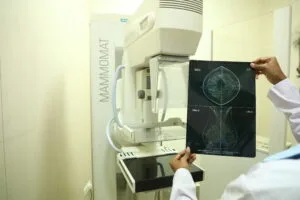Cervical Cancer Screening Guidelines

To eliminate cervical cancer, all countries must reach and maintain an incidence rate of below 4 per 1,00,000 women by 2030.
This depends on 3 key pillars and corresponding targets:
- Vaccination: 90% of girls are fully vaccinated with the HPV vaccine by the age of 15 years.
- Screening: 70% of women screened using a high-performance test by the age of 35 years, and again by the age of 45 years.
- Treatment: 90% of women with pre-cancer treated and 90% of women with invasive cancer managed.
Cervical Cancer Screening Guidelines
| ACOG 2021 Guidelines | FOGSI 2018 Guidelines | |
| Cytology alone | 21-65 years: Every 3 years | 25-65 years: Every 3 years |
| HPV testing alone | 21-29 years: Not recommended 30-65 years: Every 5 years | 25-65 years: Every 5 years |
| Co-testing | 21-29 years: Not recommended 30-65 years: Every 5 years | 25-65 years: Every 5 years |
| Criteria to stop screening | Women over 65 years of age with previous adequate negative prior screening* and no history of CIN2+. Women with no prior screening should undergo tests once at 65 years and, if negative, they should exit screening. | Women over 65 years of age with previous adequate negative screening* and no history of CIN2+ within the last 20 years. |
| Women with history of hysterectomy | No screening for cervical cancer in women who have had a hysterectomy with the removal of the cervix, unless they have a history of CIN2+ lesions or cervical cancer. | In women who have undergone hysterectomy for benign reasons, screening is not advised. In women who have undergone hysterectomy with a report of CIN2+ lesions, screening should be continued for 20 years from the age of surgery. |
| Post-vaccination | Women who have received the HPV vaccine should be screened according to the same guidelines as women who have not been vaccinated. | |
*Adequate negative prior screening results are defined as 3 consecutive negative cytology results or 2 consecutive negative co-test results within the previous 10 years, with the most recent test performed within the past 5 years.
Co-testing or HPV DNA testing SHOULD be the preferred method of screening. Doing a PAP LBC by itself is not enough



